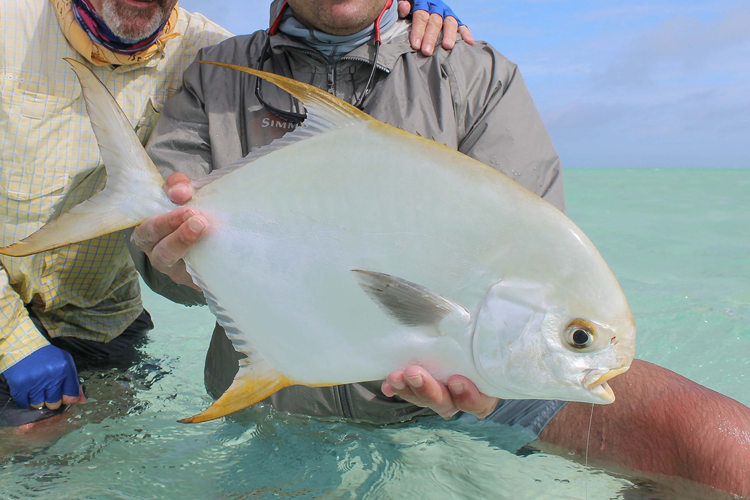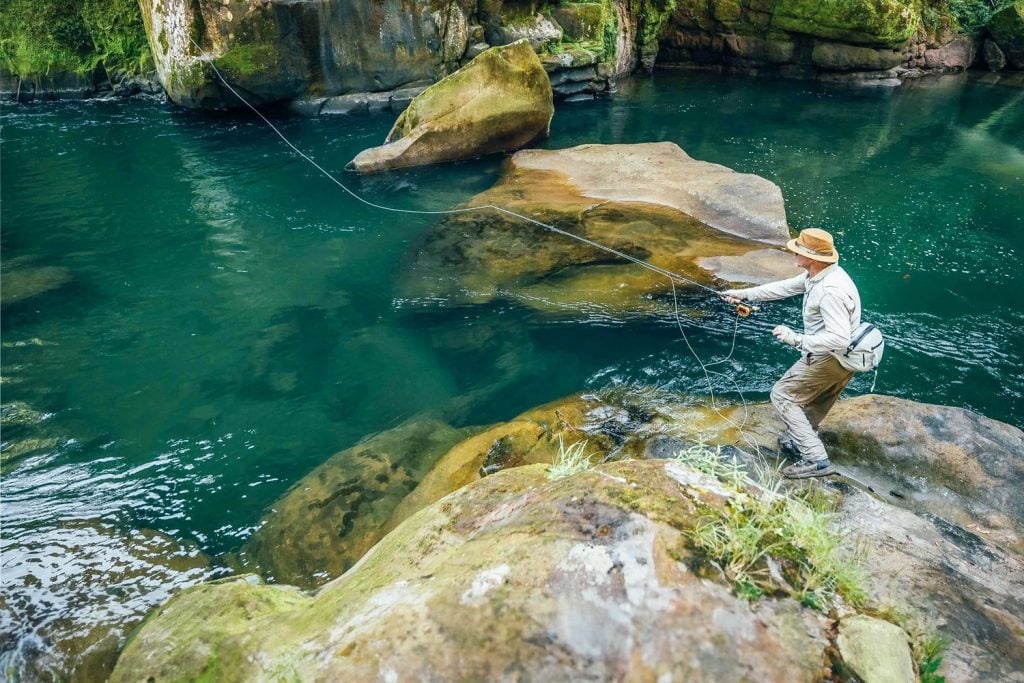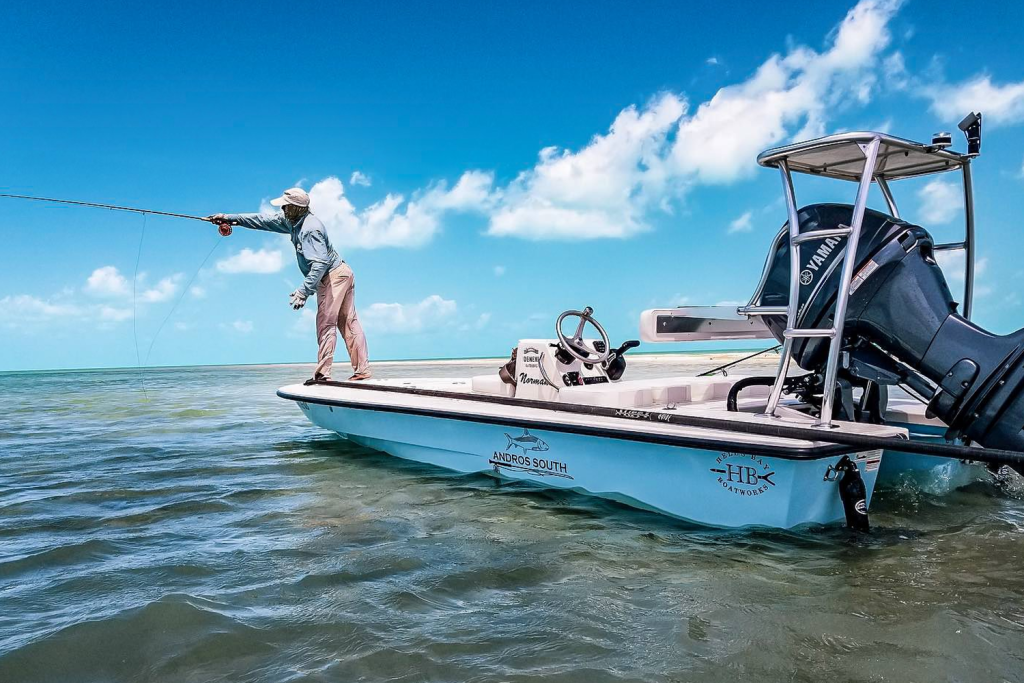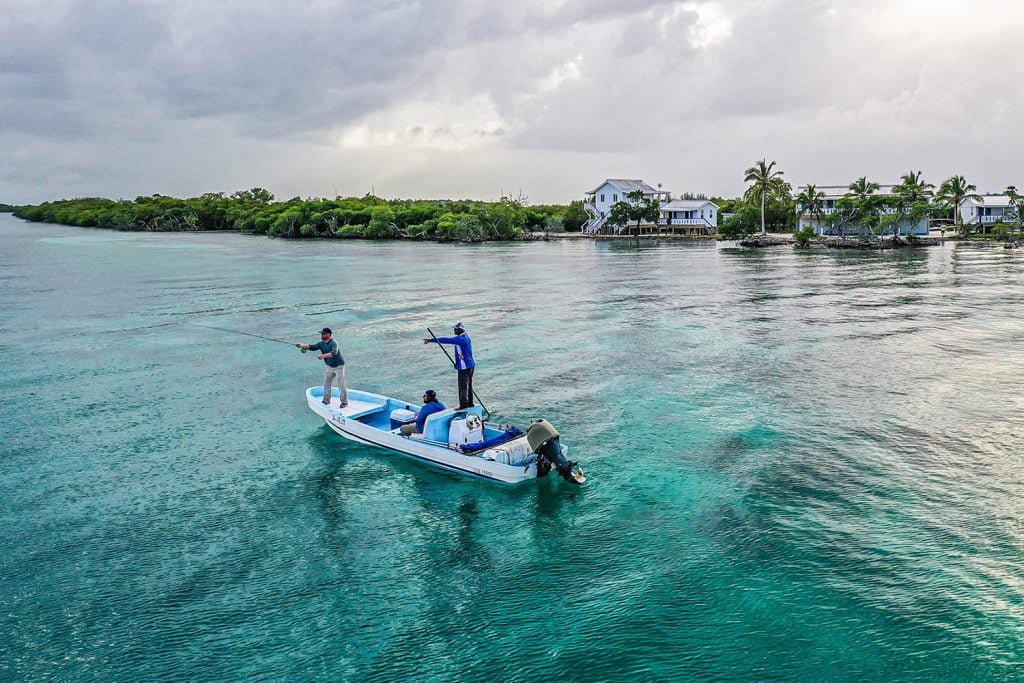Name: Permit
Also known as: Palmetto
Scientific Name: Trachinotus falcatus
PERMIT Description
The Permit fish has a compressed body that gives the fish the impression that’s it’s tall and thin. They can be recognised by their elongated dorsal and anal fins, their tails are also deeply forked. They’re usually a highly reflective, greyish-silver colour, so much so that they are very difficult to see in the shallows.
They have between 6 to 7 dorsal spines, 16 to 20 soft rays, and sport an orange patch on their bellies, just in front of their anal fins. Permits eyes are on the side of their head to give them a good all-round vision. However, this does mean that when a fish is tailing and feeding on the bottom they cannot see their own mouth or what they are about to feed on.
This is why Permit switch over to other sensors like vibration and scent when in close feeding quarters. This is thought by many why on so many occasions a Permit will see you twitch your fly chase after it, tail over it and then nothing happens, as there is no vibration or scent from your artificial fly.
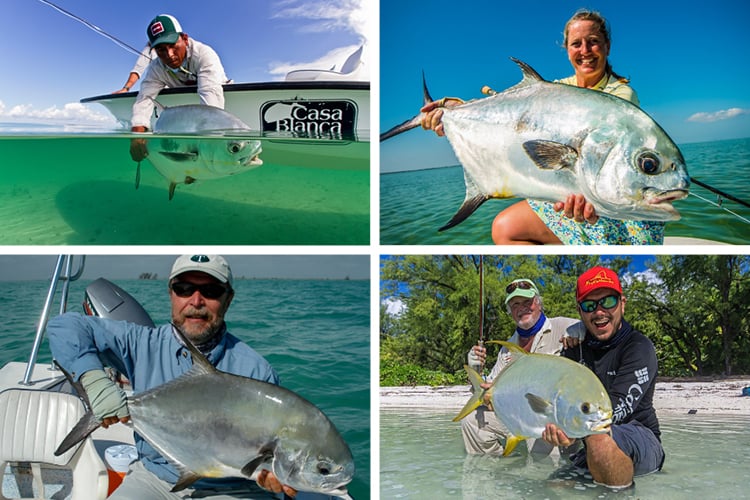

Average PERMIT Size
The Permit can be caught in all ranges from just 1lb right through to 60lb, however, according to the Florida Museum, fish have been caught by other methods to 79lb A good average size for any fly angler is a fish around 10 – 15lb
Where to catch Permit
The Permit fish range along the Atlantic Coast of the US from Massachusetts, all the way south to Brazil, along with the Caribbean Islands and the Gulf of Mexico coast. Although they are perfectly happy out in the ocean in deeper water, it is the shallows, saltwater flats and connecting channels that most people encounter Permit with them mostly hiding in channels and holes.
Fishing Methods for Permit:
Although the Permit fish can be caught on live crab and shrimp, the art and holy grail of catching a Permit on the fly is considered the highest accolade. Fishing for these fish while fly fishing is very exciting as you will be sight fishing (Only casting when you can see either some cruising or feeding Permit).
Normally fishing is carried out wading shallow water where you can look for fish, once spotted you and your guide will try to get in the perfect position to take the shot for you do not get many second casts at Permit so a bit like hunting you have to make sure the first cast counts. Fishing would normally be with flies that are trying to intimidate small crabs or shrimps.
As mentioned above put the cast in the right position and give your fly a few twitches so the Permit can see you fly, normally means an interested fish will cover your fly, the trick here as they are basically bling when on top of your fly is to convince the permit to eat your fly. (But that’s a totally different article for another day)
Best Tackle for catching Permit:
For tackle, it is normally a single-handed 9ft saltwater fly rod between 7 to 9 # and a suitable reel that can hold a floating warm saltwater fly line and lots of backing. As for flies, there are millions of variations and theories of different imitation crab & Shrimp patterns many that you can simply purchase in local tackle shops.
However no matter how many flies you have when you got Permit fishing your guide will ask to look at your flies, then even though you have tons of nice new flies they always take of their hat and pull some old fly off and say let’s try this one.
One thing for sure is fishing for Permit with a fly rod is a real addiction and once bitten there is no going back. However, I know many Permit addicts from all over the world and they are all extremely happy people just enjoying life, so you will be in good company.
Contact us
Have you ever been Permit fishing? Is this a species you’ve always wanted to target? If it is, and you’re ready to experience true Permit fishing, you can contact our fly fishing team at peter@sportquestholidays.com or call 01603 407596 today and we’ll make your dreams a reality.
Alternatively, visit our Permit fishing trips pages containing all our fishing holidays trips and vacations. You can also find our Permit fishing videos here on our Youtube Channel.
Tight Lines,
Peter Collingsworth
